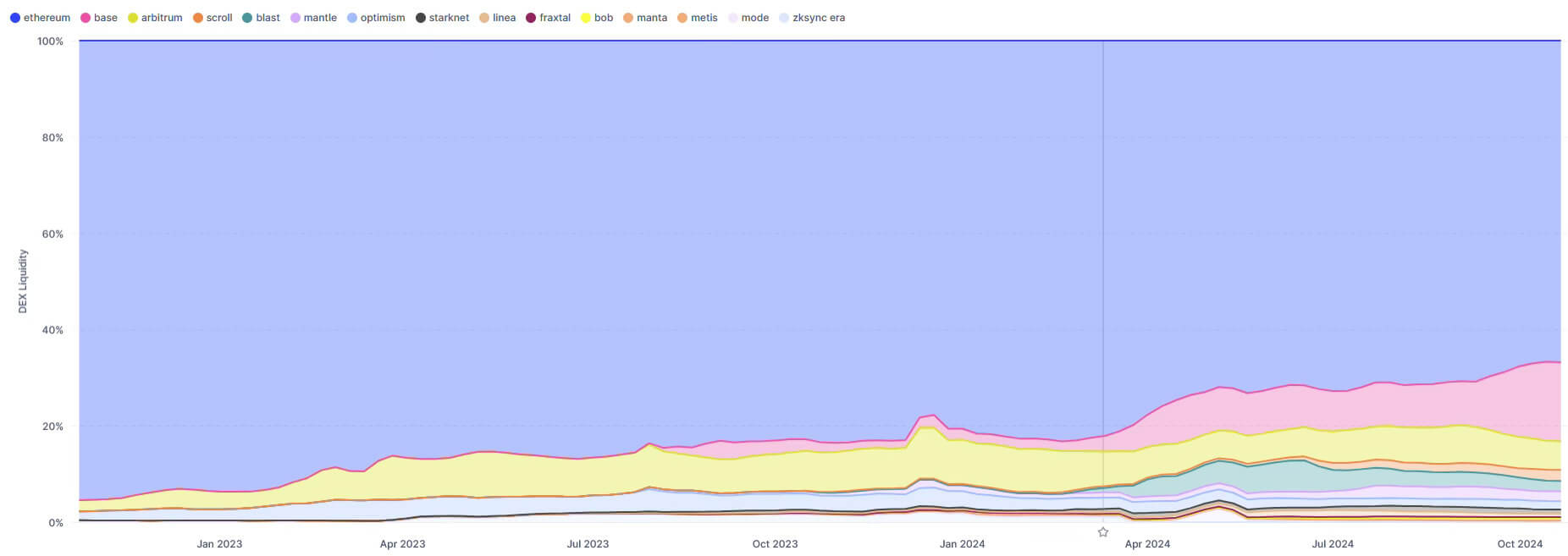The next is a visitor article from Vincent Maliepaard, Advertising Director at IntoTheBlock.
As Bitcoin surpassed its all-time excessive earlier this 12 months, pushed by institutional curiosity, many anticipated an identical surge within the decentralized finance (DeFi) area. With DeFi surpassing $100 billion in whole worth locked (TVL), it was the proper time for establishments to leap on board. Nonetheless, the anticipated flood of institutional capital into DeFi has been slower than predicted. On this article, we’ll discover the important thing challenges hindering institutional DeFi adoption.
Regulatory Hurdles
Regulatory uncertainty is probably essentially the most important roadblock for establishments. In main markets just like the U.S. and the EU, the unclear classification of crypto belongings—particularly stablecoins—complicates compliance. This ambiguity drives up prices and deters institutional involvement. Some jurisdictions, comparable to Switzerland, Singapore, and the UAE, have embraced clearer regulatory frameworks, which has attracted early movers. Nonetheless, the shortage of worldwide regulatory consistency complicates cross-border capital allocation, making establishments hesitant to enter the DeFi area with confidence.
Furthermore, regulatory frameworks like Basel III impose stringent capital necessities on monetary establishments that maintain crypto belongings, additional disincentivizing direct participation. Many establishments are choosing oblique publicity via subsidiaries or specialised funding autos to sidestep these regulatory constraints.
Nonetheless, Trump’s workplace is anticipated to prioritize innovation over restrictions, doubtlessly reshaping U.S. DeFi rules. Clearer pointers may decrease compliance boundaries, appeal to institutional capital, and place the U.S. as a frontrunner within the area.
Structural Obstacles Past Compliance
Whereas regulatory points usually dominate the dialog, different structural boundaries additionally stop institutional DeFi adoption.
One outstanding challenge is the shortage of appropriate pockets infrastructure. Retail customers are well-served by wallets like MetaMask, however establishments require safe and compliant options, comparable to Fireblocks, to make sure correct custody and governance. Moreover, the necessity for seamless on-and-off ramps between conventional finance and DeFi is essential for decreasing friction in capital circulate. With out sturdy infrastructure, establishments wrestle to navigate between these two monetary ecosystems effectively.
DeFi infrastructure requires builders with a extremely particular skillset. The skillset required usually differs from conventional finance software program improvement and may range blockchain by blockchain. Establishments which are solely trying to deploy in essentially the most liquid methods, will possible must deploy into a number of blockchains which may improve overhead and complexity.
Liquidity Fragmentation
Liquidity stays considered one of DeFi’s most persistent points. Fragmented liquidity throughout numerous decentralized exchanges (DEXs) and borrowing platforms poses dangers comparable to slippage and unhealthy debt. For establishments, executing massive transactions with out considerably affecting market costs is significant, and shallow liquidity makes this troublesome.
This could create conditions the place establishments must execute transactions over a number of blockchains to carry out one commerce, including to complexity and growing danger vectors on the technique. To draw institutional capital, DeFi protocols should create deep and concentrated liquidity swimming pools able to supporting very massive trades.


A superb instance of liquidity fragmentation could be seen with the evolution of the Layer 2 (L2) blockchain panorama. Because it turns into cheaper to construct and transact on L2 blockchains, liquidity has migrated away from Ethereum mainnet. This has lowered liquidity on mainnet for sure belongings and trades, due to this fact decreasing the dimensions of deployment that establishments could make.
Whereas applied sciences and infrastructure enhancements are in improvement to resolve many liquidity fragmentation points, this has been a key blocker for institutional deployment. That is very true for deployments onto L2s the place liquidity and infrastructure points are extra pronounced than on mainnet.
Threat Administration
Threat administration is paramount for establishments, particularly when participating with a nascent sector like DeFi. Past technical safety, which mitigates hacks and exploits, establishments want to grasp the financial dangers inherent in DeFi protocols. Protocol vulnerabilities, whether or not in governance or tokenomics, can expose establishments to important dangers.
To compound these complexities, the shortage of insurance coverage choices at institutional dimension to cowl massive loss occasions like a protocol exploit, usually implies that solely the belongings earmarked for prime R/R get allotted to DeFi. Which means that decrease danger funds that may be open to BTC publicity usually are not deploying into DeFi. Moreover, liquidity constraints—comparable to the lack to exit positions with out triggering main market impacts—make it difficult for establishments to handle publicity successfully.
Establishments additionally want subtle instruments to evaluate liquidity dangers, together with stress testing and modeling. With out these, DeFi will stay too dangerous for institutional portfolios, which prioritize stability and the power to deploy or unwind massive capital positions with minimal publicity to volatility.
The Path Ahead: Constructing Institutional-Grade DeFi
To draw institutional capital, DeFi should evolve to fulfill institutional requirements. This implies growing institutional-grade wallets, creating seamless capital on-and-off ramps, providing structured incentive applications, and implementing complete danger administration options. Addressing these areas will pave the best way for DeFi to mature right into a parallel monetary system, one able to supporting the size and class required by massive monetary gamers.
By constructing the proper infrastructure and aligning with institutional wants, DeFi has the potential to rework conventional finance. As these enhancements are made, DeFi is not going to solely appeal to extra institutional capital but additionally set up itself as a foundational element of the worldwide monetary ecosystem, ushering in a brand new period of economic innovation.
This text is predicated on IntoTheBlock’s newest analysis paper about the way forward for institutional DeFi.


